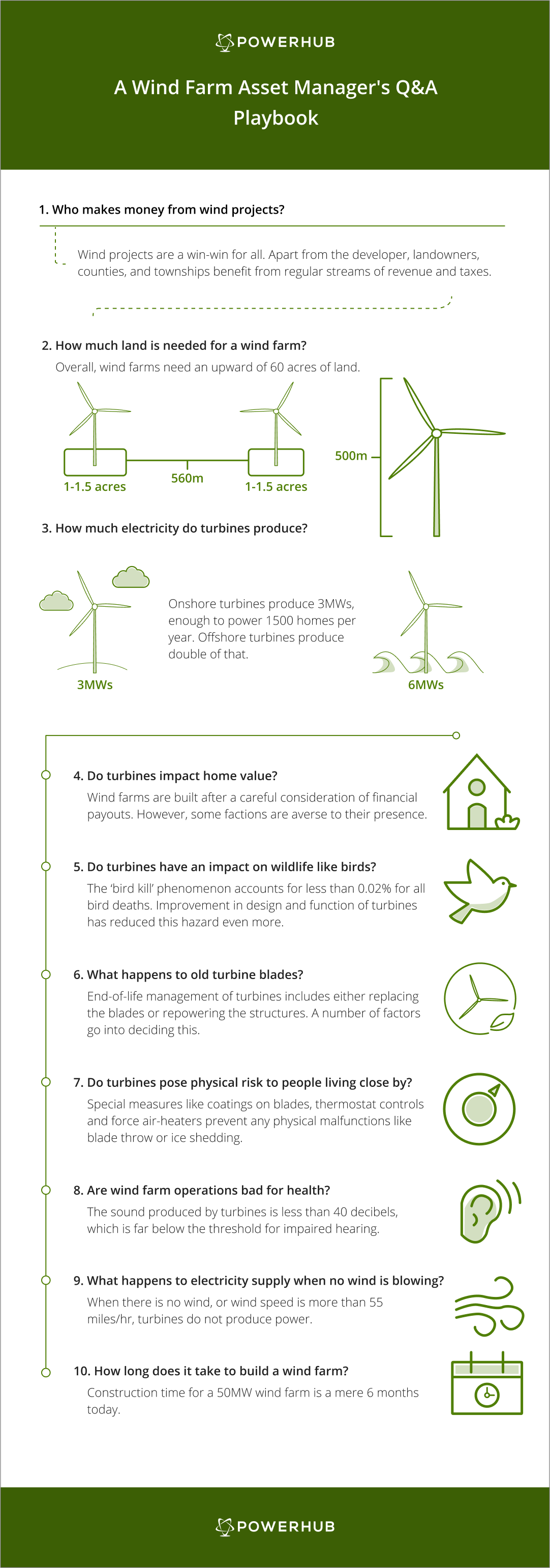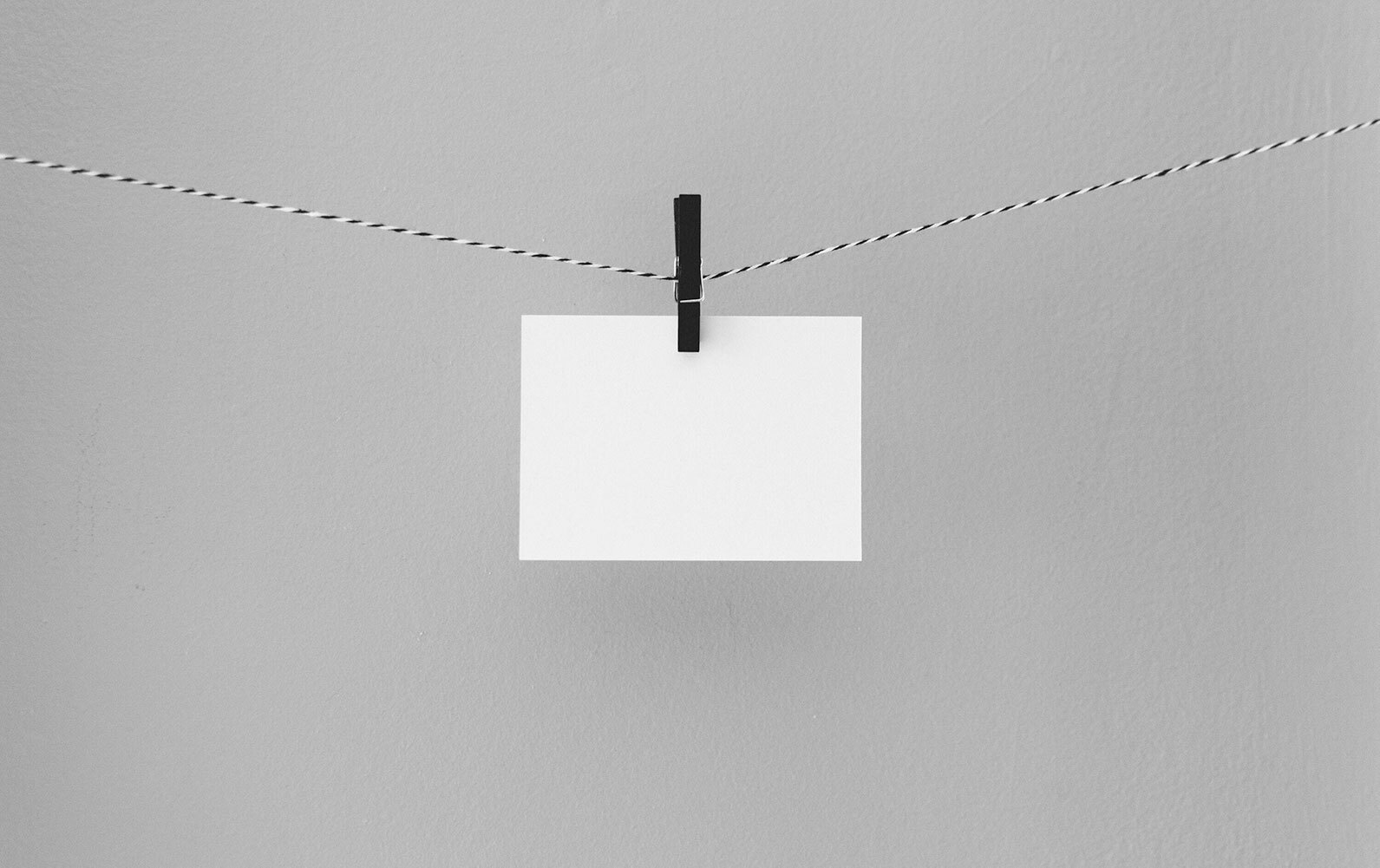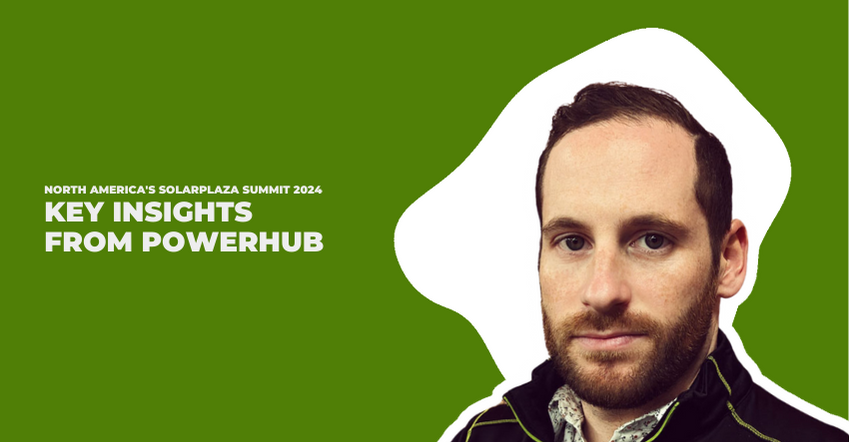I’ll be honest. I’ve been working on this playbook for a while. Simply because I wanted to get it right. And I wanted to address the basics once and for all.
Every time you feel you need a quick refresher on how wind farms operate, and what all wind asset management is about, this is where you land.
Let’s begin.

Question: Who makes money from wind projects?
The wind developer or asset owner is the first entity that receives a financial gain from a wind project. That’s an obvious answer. What most people forget is that the same project becomes a revenue source for landowners and the counties regulating these areas.
Farmers or landowners are paid annual lease payments as a reward for trading off their own use of the land for turbines. These farmers are grateful for this additional revenue stream. It can help them invest in small-scale technologies or pay off farming debts.
Counties, on the other hand, experience these benefits on a much larger scale. First, through the construction phase, a wind farm project leads to job creation. Employing skilled locals in various roles is a great way to raise standards of living and total revenue figures for a small county.
Second, the biggest benefit a township sees from a booming wind farm is tax money. Spanning a good 30-year period, such a project is truly an investment for the locals because it increases their county’s tax base.
Seeing millions of dollars in this 30-year period, the authorities can plan ahead to improve infrastructure, provide better health centers, entertainment facilities, and schools.
Question: How much land is needed for a wind farm?
This is one of the most common questions wind farm asset managers come across, from people in the industry and well, their own kids. Jokes aside, land use requirements for wind projects are an important component of zoning laws in counties. These laws undergo constant speculation in an effort to increase efficiency in wind asset management.
Wind farms span thousands of acres. The key to optimal placing of turbines is a wind speed map. This document takes into account factors like roto diameter, height of each shaft, and the distance between each placement. It’s all about optimizing wind and avoiding turbulence caused by other turbines nearby or in front.
Combined with the space needed for auxiliary cables, roads, truck rolls, and spare parts, an average-sized wind farm may need up to 60 acres of land.
Land utilization is one of the main differences in management between solar and wind projects. With multiple land lease agreements, wind developers have to invest considerable resources to fulfill obligations.
Question: How much electricity can these turbines actually produce?
The answer to this question depends on various factors. the power produced by a turbine depends on its size, location, and the average speed of wind at this location.
To simplify this discussion, let’s talk about a large, utility-scale turbine. On average, an onshore turbine produces 3MWs of power, enough to power 1500 homes per year. Since offshore turbines are exposed to higher wind speed, their output is almost double.
So, perspective: one of the world’s largest offshore turbines, 12 MW Haliade-X, powers 16000 homes. If installed on a 750MW farm, it could produce enough power to light up 1 million homes!
Question: Do wind turbines impact home value?
I’d say this is a relative question, depending on the county and its peoples’ views on turbine co-location. However, wind farms have not proven to impact home value.
As we discussed above, developing wind farms is beneficial for stakeholders. Yes, there will always be factions with varying views who feel erecting steel structures on farmland have an aesthetic cost.
However, it’s safe to say that a lot of planning and communication takes place before a wind farm enters the development phase.
Question: Do the turbines have an impact on the surrounding wildlife like birds?
Wildlife preservation organizations have raised concerns over a phenomenon called Bird Kill. However, very few have been able to prove this impact.
I believe it’s worthwhile to note that turbines don’t pose a bigger threat than powerlines, communication towers or modern skyscrapers. Research conducted by the Unites States Energy Department reveals that bird kill accounts for less than 0.02% of all bird deaths caused by human interventions.
Improvements in turbine design and siting have further helped minimize potential impacts on birds. Moreover, partnerships between renewable energy developers and wildlife experts has been key in putting together the National Wind Coordinating Collaborative. This initiative aims to tackle this challenge with open communication and teamwork.
Question: What happens when turbines get old?
End-of-life management of turbines is an essential part of efficient wind asset management. Turbines must either be replaced or repowered with better technology once reach their 25-30-year life.
So, what happens to the old blades? They are either broken into smaller pieces and buried in landfills, or are recycled to extract raw materials.
While most wind farms are yet to reach their end-of-life phase, approximately 2 GW worth of projects from the 1980s wind boom have reached the end of their working life. According to Bloomberg NEF, approximately, 3800 blades will descend from steel towers across Europe in the next two years, with U.S close behind with 3000 through 2024.
Case in point: three farms in the north-western U.S. have made the decision to refit their turbines. So, the fiberglass blades were taken down, cut through their lengths with industrial saws, and buried in a turbine graveyard in Casper, Wyoming.
Sounds boring, I know. Better yet, take a look at this Dutch playground using decommissioned turbine blades to create mazes and tunnels. An extremely creative way to put these sturdy structures to use!
Question: Do Wind farms pose physical risk to people living close by?
Wind turbines are considered very safe. Less than 40 such incidents were identified in a fleet of 40,000 turbines in the United States. That’s a great record. However, just like any other machinery, turbines do experience technical difficulties, failures, and adverse weather setbacks.
For instance, turbine blades may accumulate ice if they are in areas experiencing below freezing temperatures. This ice may release from the blade when the rotor operates, resulting in ice shedding. While this is a possibility, modern turbines now come equipped with cold-weather measures that allow them to operate even when temperatures fall to -40 degrees in the winters.
These measures include special coatings on blades, thermostat controls, and force air-heaters to prevent ice accumulation.
Similarly, blade throw is the malfunction and detachment of a blade from the turbine. I feel this failure is dated.
With thousands of hours’ worth of engineering and experience going into turbine technology, such physical harm has not only been minimized, I’d say it’s pretty much non-existent now.
Rest assured, wind asset management is now backed by sound technological advancements. These have resulted in reliable, safe, and state-of-the-art wind farms.
Question: Are wind farm operations bad for health?
The debate over physical harm is an old one. For decades, wind asset developers and certain factions of the community have speculated if a wind farm has an impact on physical health and wellbeing of those living close by.
Most studies negate this concern. According to the U.S. Department of Energy, the low-frequency sound produced by wind turbines is less than 40 decibels. This number is well below the pressure threshold that causes hearing impairments or other health conditions in humans.
Moreover, as the industry matures, continuous development in sound mitigation technologies has become a prominent part of introducing efficiencies in wind farm asset management.
However, to err on the side of caution, there’s a safe distance between the turbines and neighboring homes. This distance may vary depending on the jurisdiction.
Question: What happens to electricity supply when no wind is blowing?
On average, a turbine starts producing power when wind speeds reach 10 miles per hour. Production reaches a peak when speeds are between 30-33 miles an hour.
For safety concerns, most modern turbines have a wind speed threshold at which they operate optimally. For instance, if the speed of wind reaches 55 miles an hour, turbines shut down to prevent mechanical damage. On the other hand, if wind dies down to half, the power produced by a turbine decreases 8x.
So, the answer is simple. No wind, no electricity. This is part of the reason why renewable energy companies are now focusing on storing power when the wind does blow.
Perhaps the biggest trend in renewables today is hybrid technology i.e., setting up solar panels on the same farm. The good news is that solar has a profile that almost perfectly complements a wind generation profile.
So, when it’s typically not windy the sun is up and powering solar cells. The incredible advancement in battery storage costs also makes it effective to couple these systems with storage technologies that can smoothen out the times when there is little wind resource available.
Question: How long does it take to build a wind farm?
Wind farms have seen a sharp increase in demand over the last decade. As a result, installation and development times have gone down considerably to encourage this growth further.
For a large wind farm, for instance, with a production rate of 50MW, the construction time from start to finish is a mere 6 months. Wind developers and O&M teams are now equipped with the best-in-class technologies to access far-flung areas and get a site shovel-ready within weeks.




